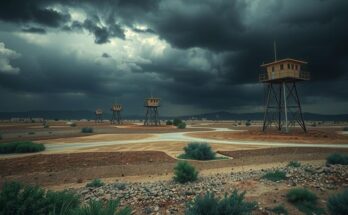On March 11, 2011, Japan experienced a devastating magnitude 9.0 earthquake, resulting in widespread casualties and displacement. The disaster prompted a reevaluation of Japan’s disaster response systems, emphasizing proactive support and improved emergency preparedness. Surveys indicate a strong public desire for better restoration of vital services and infrastructure. Research warns of potential future seismic events due to accumulating geological stress, necessitating continued preparedness efforts.
On March 11, 2011, a magnitude 9.0 earthquake struck Japan at 2:46 PM, resulting in over 22,000 deaths or disappearances and displacing hundreds of thousands. The quake was caused by a massive fault rupture 450 kilometers long and 200 kilometers wide, generating tsunami waves exceeding ten meters. The disaster notably impacted the Fukushima Daiichi nuclear power plant, leading to meltdowns in three reactors. Changes in Japan’s geographical topography and crustal deformation continue to be observed even fourteen years later.
The earthquake revealed both strengths and weaknesses in Japan’s disaster preparedness. Many municipalities, particularly in the Tohoku region, faced challenges when government buildings designated as shelters were destroyed. In response, the central government is advocating for alternative municipal buildings for use during disasters; however, improvements have progressed slowly in some areas.
Additionally, Japan’s disaster-response system highlighted the necessity for effective coordination of assistance. The shift from a “pull-type support” system, where aid is only provided upon request, to a “push-type support” where emergency supplies are proactively delivered, aims to enhance efficiency during crises. Revisions to disaster laws have facilitated this change, emphasizing the importance of timely intervention.
Inaccurate early estimates regarding the earthquake’s magnitude may have attributed to the high casualty rates. The Japan Meteorological Agency initially undervalued the quake’s strength, resulting in miscalculations of tsunami height. The agency has since adapted its assessment procedures, ensuring that potential tsunami risks are effectively communicated to the public.
The 2011 earthquake underscored the significance of evacuation shelters in life-saving efforts. Overcrowding led to insufficient supplies and health-related issues, including influenza outbreaks in some centers. Improvements suggested by experts include ensuring adequate shelter conditions, clean facilities, and addressing the specific needs of women and families.
Post-disaster transportation paralysis left millions stranded, raising concerns about crowd safety during emergencies. Experts propose that preparations should focus on preventing immediate home returns and the associated risks.
According to a recent NHK survey conducted to commemorate the 14th anniversary of the earthquake, many residents in northeastern Japan emphasized the importance of promptly restoring essential services, prioritizing the management of evacuation facilities and improvements to living conditions.
Research teams have warned that dormant stress energy at an undersea trench off northern Japan could potentially lead to another major quake. Studies indicate significant strain accumulation between tectonic plates, suggesting that the energy build-up could be comparable to that of a mega-quake. Researchers continue to monitor seismic activity and advocate for public awareness of future quake possibilities to ensure preparedness.
The 2011 Great East Japan Earthquake exemplified the need for improved disaster response mechanisms and preparedness strategies. The transition to proactive aid delivery highlights an important shift in Japan’s approach to disaster management. Constant vigilance and awareness of geological risks remain paramount, as evidenced by ongoing studies suggesting potential future seismic activity. Enhanced shelter conditions and infrastructure preparedness are essential for safeguarding lives in future disasters, underscoring the lessons learned from the 2011 tragedy.
Original Source: www3.nhk.or.jp




